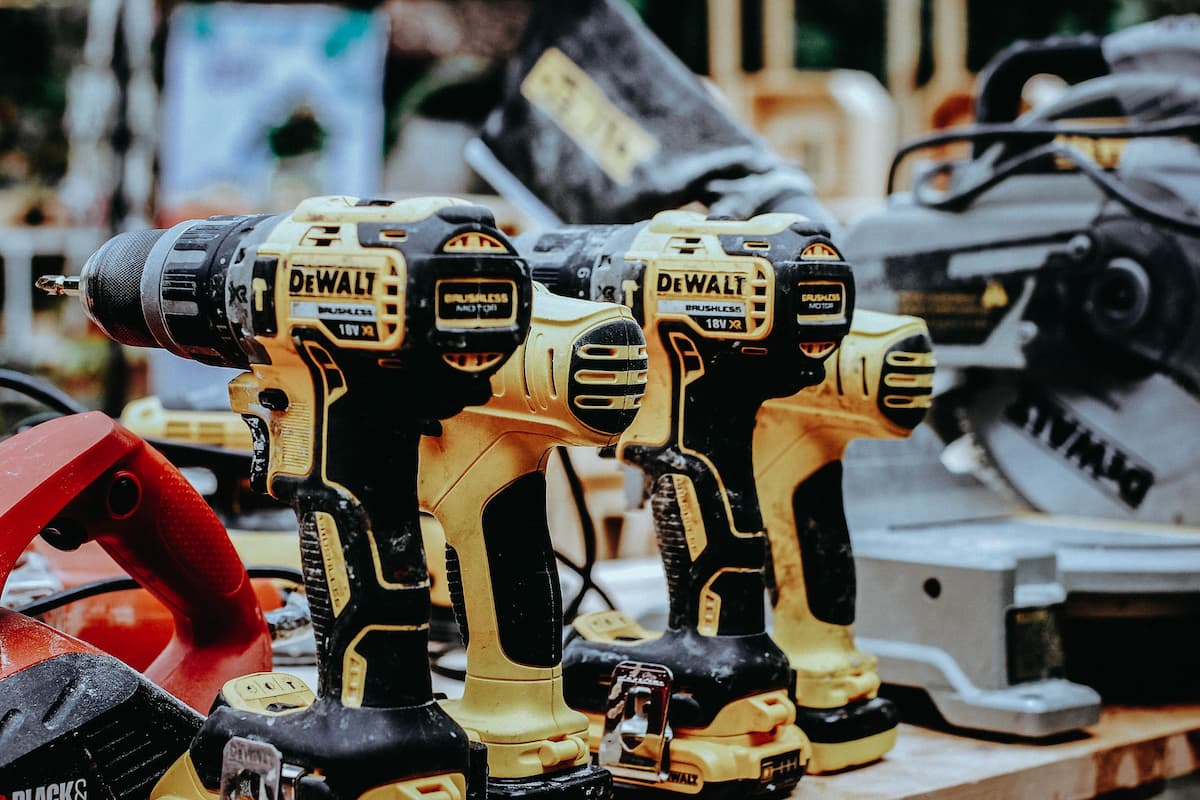Can You Bring Power Tools On A Plane? (TSA Dos and Don’ts)
When we think about traveling for work, we often think of high-powered executives in business suits.
However, many different kinds of people fly every day for their jobs, including contractors, electricians, plumbers, and other tradespeople.
These skilled workers are needed worldwide for a range of unique projects and may need to travel with specialized equipment, such as power tools.
Power tools are permitted aboard aircraft; however, there are several regulations around how they must be packed. The TSA allows tools under 7 inches (17.78 cm) in carry-on bags, while larger tools and power tools must be packed in checked luggage. Lithium batteries, often used by power tools, cannot be checked and must be stowed in carry-on luggage.
This article discusses the rules for bringing power tools on a plane, as well as how to pack them and their batteries.
Does the TSA Allow Power Tools on Planes?

The Transportation Security Administration (TSA) allows passengers to bring power tools onboard aircraft as long as they adhere to certain regulations.
Checking the TSA website for current information is the best way to ensure your tools reach your destination; however, all final decisions lie with TSA agents on the ground.
Can You Pack Power Tools in Carry-on Bags?
Power tools cannot be packed in carry-on luggage; however, hand tools measuring under 7 inches (17.78 cm) can be.
According to the TSA, hand tools refer to any manual tool without a blade or motor attached (e.g., a screwdriver, wrench set, or pliers) but exclude certain items such as multi-tools with knives or hammers.
As a rule of thumb, anything that could be used as a weapon needs to be checked, including large tools, blades, and hammers.
Just remember that airlines often have size/weight limits for carry-on bags, and hand tools can make luggage significantly heavier.
Can You Pack Power Tools in Checked Luggage?
Official TSA policy states that air travelers must pack their power tools and hand tools longer than 7 inches (17.78 cm) in checked luggage.
For travelers with any concerns about their tools being confiscated at security, checking them is the best option.
Almost all power tools are permitted in checked bags, including blades, hammers, hatchets, and battery-powered tools; however, passengers should practice caution when packing gas-powered tools.
While they are typically permitted in checked bags, they may be considered hazardous if they contain gas or oil residue.
Before packing any tools in your checked luggage, confirm your airline’s policy on gas-powered tools.
Can You Take Lithium Batteries on a Plane?
When checking in for a flight, airline staff will always ask passengers if they have lithium batteries in their checked bags.
If flying with power tools, the answer is most likely, “yes.”
Luckily, TSA and airline regulations allow lithium ion and lithium metal batteries aboard aircraft, but they should be transported in carry-on luggage, if possible.
If passengers cannot remove the lithium batteries from their power tools, they may pack the battery and device in their checked bags, but any spare lithium batteries must be carried on.
For example, passengers traveling with a power drill and two rechargeable lithium batteries must pack the drill with one battery installed in their checked bag.
The second, or spare battery, needs to be packed in their carry-on bag.
How Do You Pack Power Tools in Checked Bags?
Seasoned travelers know to keep fragile items in their carry-on bags to avoid mishandling and damage.
When it comes to power tools, however, this isn’t an option, and they need to be packed in checked bags.
All tools should be disassembled when packed, except for lithium batteries installed in tools (as mentioned above).
Power tools often come with a sturdy carrying case, typically with secure holding spots with plenty of padding.
Packing tools in their cases is the safest option for everyone, ensuring sharp blades and metal pieces are secured during transit and won’t pose a danger to those handling the bags.
Passengers can purchase carrying cases for their tools online through the manufacturer’s site or Amazon.
Depending on size, cases can be placed inside larger luggage with some padding between them and the sides of the bag.
Packing Tools Without a Carrying Case
If a carrying case is not an option, air travelers can disassemble and wrap each part of their tools in heavy cloth, newspaper, bubble wrap, and tape.
Ideally, sharp edges should be covered with appropriate materials, and heavy objects should be padded to avoid bumping into other items and damaging them.
Once properly wrapped, passengers can place their tool parts in separate boxes or into a toolbox, adding another layer of protection.
Travelers can label each tool piece and organize them into separate boxes to make reassembling easier on the other side.
Additionally, regardless of whether your power tools come with a case, airlines have size and weight restrictions for checked luggage.
Power tools can be heavy, so the number of tools you bring may be limited.
Ask the TSA

Those travelers with more questions or concerns over specific tools can easily ask the TSA.
There’s always the option of speaking to TSA agents at the airport, but one way to get ahead of the crowd is by reaching out on Twitter.
By tweeting @AskTSA, future travelers can receive direct answers to their questions from official TSA sources.
Passengers can even send photos of their tools to the TSA so there are no miscommunications.
Conclusion
Power tools are allowed onboard aircraft in checked bags only; however, passengers can bring hand tools under 7 inches (17.78 cm) in carry-on bags.
When traveling with power tools, they must be disassembled and secured to keep the airline crew and TSA members safe when handling them.
Gas and battery-powered tools are permitted in checked bags, but it’s important to check gas-powered tools for residue, as this may be considered hazardous.
Lithium batteries installed in power tools can be packed in checked luggage, though spare lithium batteries must be carried on.
Before traveling with your power tools, it’s best to check with your airline and/or the TSA for up-to-date information on transporting them by plane.